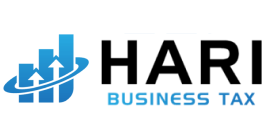What is Line 10100 on Your Canadian Tax Return
Line 10100 is an important part of your Canadian tax return. You’ll find it on the T1 General Form. This line shows your total employment income. It helps figure out how much tax you owe. Knowing what this line means can stop mistakes and keep you in good standing with the Canada Revenue Agency (CRA).
Request a Free Consultation

Understanding Line 10100 as Total Employment Income
What does Line 10100 mean?
Line 10100 means the total employment income you made in the year. This income is taxable in Canada.
Types of Income Included
Here’s what goes into Line 10100:
- Salaries and Wages: The usual paychecks from your job.
- Commissions and Bonuses: Extra pay for sales or hitting goals.
- Gratuities and Tips: Extra money for services, like at a restaurant.
Reporting these amounts right is key. If not, you might get into trouble later.
Importance of Accurate Reporting
Putting the right numbers on Line 10100 matters. It helps you follow CRA rules. If the info is wrong, CRA may change it later. That can cause problems or fines. Always check your slips carefully before sending your tax return.
Where to Find Line 10100 on the Tax Form
You’ll see Line 10100 on the T1 General Form. It sits near other income sections. When adding up your taxable income, look here for clear info.
Importance for Tax Calculation and Compliance
The amount on Line 10100 affects your tax bill and any refunds you might get. It also plays a part if you use CRA My Account to check things online. Getting totals right here makes tax time easier and more accurate.
Knowing about Line 10100 helps when you do your taxes each year. It keeps you clear with CRA and helps make sure you report all employment income correctly.
Gathering and Calculating Employment Income on Your Tax Return
Knowing about line 10100 tax return helps you report your income right. Line 10100 shows your total employment income for the year. It covers wages, salaries, commissions, bonuses, tips, and gratuities you earned.
What Is Line 10100 on Tax Return?
Line 10100 means all your employment income before any taxes or deductions. This number mainly comes from Box 14 (Employment Income) on your T4 slips. Employers send these slips to the Canada Revenue Agency (CRA).
Here’s what line 10100 usually includes:
- Regular wages and salaries
- Commissions and bonuses
- Tips and gratuities you got at work
- Other taxable benefits tied to your job
You should get your T4 slips by the end of February after the tax year ends. These slips help you fill out line 10100 correctly.
Accurate Reporting of Employment Income
Reporting your income right keeps you clear with CRA. It also stops problems like audits or extra taxes later.
To calculate your employment income properly:
- Gather all T4 slips from every employer before their deadline.
- Check that Box 14 amounts match your pay stubs.
- Add any other taxable earnings not on a slip but required by law.
- Don’t count the same income twice if you have multiple payroll sources.
Payroll mistakes can cause underreporting or overreporting. So, check all numbers carefully before you file.
Handling Multiple Employers’ Income Reporting
If you had more than one employer in a year, each must give you a separate T4 slip showing what they paid through payroll.
Reporting Contractor Income vs Employee Payroll
Contractor pay is different from employee wages. Usually, contractor payments don’t appear on T4 slips. Instead, they may show up on forms like T5018 or come from invoices contractors send directly.
For employees with more than one job:
- Combine totals from all employers for line 10100.
- Watch out so contractor income doesn’t mix up with payroll wages.
- Remember, some benefits aren’t taxable and shouldn’t go here but reported separately per CRA rules.
Common Payroll Mistakes With Multiple Employers
People often mess up by not adding incomes right or mixing up benefits with taxable amounts.
To avoid this:
- Keep good records of pay stubs and benefit papers from each job.
- Make sure each employer’s numbers match your own documents.
- Check CRA guides if you’re unsure about which earnings or benefits count as taxable.
Understanding employment income line 10100—especially when working multiple jobs—helps you file correctly under Canadian tax rules.
Differentiating Line 10100 from Other Tax Lines
Line 10100 on your Canadian tax return shows your total employment income. This line covers wages, salaries, commissions, bonuses, and taxable tips you earn in the year. The Canada Revenue Agency (CRA) uses this line to track your main job earnings.
You need to report Line 10100 carefully. Mistakes here can cause problems with CRA or lead to audits. This line is different from other Canadian income tax lines because it only counts gross employment income before taking away things like CPP contributions or EI premiums.
For example, salary and hourly wages reported on your T4 slip go in Line 10100. Knowing what counts as taxable income helps you report all your eligible earnings right.
Here’s a quick list of what goes into Line 10100:
- Wages and salaries
- Commissions and bonuses
- Taxable tips reported
Distinguishing Line 10100 from Line 10400 (Other Employment Income)
Line 10100 lists regular employment pay, but Line 10400 is for other kinds of job income. This includes foreign employment income, tips not on pay slips, and some taxable benefits like car or housing allowances.
The key difference between line 10100 and line 10400 is the type of income:
- Line 10100: Regular wages, salaries, commissions
- Line 10400: Other pay like:
- Foreign job income
- Tips you get directly
- Taxable benefits from your employer
Knowing this difference helps you avoid missing any income or counting some twice on your tax return.
Here’s what usually fits under Line 10400:
- Tips and gratuities outside payroll
- Foreign earnings not shown on T4
- Allowances for vehicles or housing
Understanding the Relationship Between Line 10100 and Line 15000 (Total Income)
Line 15000 shows your total income. It adds up all the money you made—employment (Lines 10100 + 10400), investments, rental income, pensions, and more. This big total helps calculate how much tax you owe.
To figure out your total income on Line 15000:
- Start with employment income on Line 10100.
- Add other job-related money from Line 10400.
- Include any other incomes like dividends or capital gains.
- Add all these together for the final number on Line 15000.
Getting these lines right keeps your filing clean with CRA rules. Plus, it gives a clear view of all your taxable money for the year.
Importance of Accurate Line 10100 Reporting
Line 10100 on your tax return shows your total employment income. This means wages, salaries, tips, bonuses, and other taxable money you earned. Getting this line right matters because it changes your tax liability. Mistakes can cause you to pay too much tax or get less refund than you should.
Accurate line 10100 reporting helps fix problems early. It also stops delays when the CRA processes your return. You can check your amounts with CRA My Account before filing. This tool lets you compare your info with T4 slips from employers. Fixing mismatches fast lowers the chance of penalties or audits.
Making sure all your work income is on line 10100 keeps you in good standing with CRA rules. It avoids headaches when they check your tax return later.
Consequences of Errors on Line 10100
Errors on line 10100 can cause big trouble. The CRA might reassess your taxes if what you report does not match employer records like T4 slips. That usually means you owe more tax plus interest.
The CRA may charge penalties if they think mistakes are careless or on purpose. If your employer made payroll mistakes, they must fix those slips first before you change your return.
Sometimes, repeated errors lead to a formal complaint or a tax audit focused just on employment income. These audits mean more questions and take longer to sort out.
You can avoid this by carefully checking every figure before entering it for line 10100.
Tips for Ensuring Compliance
Here are ways to follow CRA rules for line 10100:
- Maintain Records: Save all pay stubs and T4 slips for the year.
- Use Tax Software: Good programs help pull data from slips and catch errors.
- Consult Professionals: Ask an expert if you’re not sure about gross vs net income or how to report benefits.
- Understand Gross Income vs Net Income: Line 10100 wants gross income—before any deductions like CPP or EI come off.
Doing these things helps you avoid mistakes and makes filing taxes easier each year.
Handling Errors on T4 Slips for Line 10100 Tax Return
If your T4 tax slip has errors, your line 10100 employment income can be wrong. Box 14 on the T4 shows your total employment income. You must report it exactly as it says to avoid trouble with the Canada Revenue Agency (CRA). Payroll mistakes happen a lot, like wrong amounts, missing info, or mixing up benefits.
Here’s what to do if you find a mistake:
- Contact your employer right away and ask for a fixed slip.
- Check CRA My Account to compare your numbers with theirs.
- If they don’t fix it fast, you can file an official complaint with CRA.
Wrong info might cause the CRA to reassess your taxes or even start a tax audit. They check closely when your reported income doesn’t match what employers submit. Keep notes of all talks or emails so you can clear things up faster.
Remember, only money from the employer-employee relationship goes on line 10100. Other payments might belong somewhere else on your return.
Reporting Income from Multiple Employers
If you worked for more than one employer during the year, each will give you a T4 slip with Box 14 employment income. Add all those amounts together and put the total on line 10100 of your tax return.
You should know the difference between line 10100 and line 10400:
- Line 10100: Wages, salaries, tips, bonuses, and commissions as an employee.
- Line 10400: Other job income like honorariums or taxable allowances not in Box 14.
If you’re a contractor or self-employed and get paid fees instead of wages, don’t put that under line 10100. The CRA wants you to report that differently.
Make sure your reporting is accurate. This lowers the chance of problems during audits. Include all bonuses and commissions paid through payroll—they count in Box 14 totals. Tips and gratuities also matter if your employer includes them in pay statements.
By adding incomes from different jobs properly—mostly using box 14 numbers—you’ll keep line 10100 correct. This avoids confusion about how to report “line 10100 tax return” when working multiple jobs in one year.
Key Takeaways on Line 10100 Reporting

Line 10100 on your Canadian tax return shows your total employment income. This includes wages, salaries, tips, bonuses, and other taxable earnings you got from work. You need to report this line 10100 tax return info right so you don’t cause mistakes that might lead to audits or reassessments by the Canada Revenue Agency (CRA).
Knowing the line 10100 meaning helps you report your income properly. It is different from Line 10400, which covers other kinds of employment income like taxable benefits or allowances not part of regular wages.
When you fill out your return, include amounts from slips like the T4 under line 10100. These slips tell your yearly earnings and deductions taken by your employer.
The total you report at line 10100 goes into calculating your total income at line 15000. This total is key to figuring out how much tax you owe or what refund you get. Making sure these numbers are right helps avoid tax mistakes.
Remember:
- Line 10100 shows all taxable wages and salaries.
- Use slips like the T4 for exact amounts.
- Accurate reporting stops delays and penalties.
- These totals help work out total income on line 15000.
Frequently Asked Questions About Line 10100 on Your Tax Return
What is the role of Box 14 employment income in calculating Line 10100?
Box 14 on your T4 slip shows total employment income. You use this amount to fill in Line 10100 on your Canadian tax return.
How do I handle taxable benefits on Line 10100?
Only taxable benefits reported in Box 14 should be included in Line 10100. Non-taxable benefits are reported elsewhere.
Can supplemental unemployment benefits be included in Line 10100?
Yes, if they appear as employment income on your T4 slip, include supplemental unemployment benefits in Line 10100.
What is the difference between Line 10100 and Line 10400?
Line 10100 reports regular wages and salaries. Line 10400 covers other employment income like foreign earnings and certain taxable benefits.
Do I report employee profit-sharing on Line 10100?
Employee profit-sharing plan amounts reported on a T4PS slip should not go on Line 10100 but reported separately.
How can tax software help with reporting Line 10100?
Tax software imports data from T4 slips, reducing errors and ensuring accurate reporting for Line 10100.
What should I do if my T4 slip has payroll mistakes affecting Line 10100?
Contact your employer to correct the slip promptly. If unresolved, you can file an official complaint with the CRA.
Are contractor incomes reported on Line 10100?
No, contractor income usually appears on T4A slips and should not be included on Line 10100.
Key Points for Accurate Reporting of Line 10100 Income
- Always use Box 14 employment income totals from all your T4 slips.
- Include taxable wages, salaries, bonuses, tips, and taxable allowances only.
- Do not report contractor or self-employed income here; use T4A slips for those.
- Verify amounts carefully against pay stubs before filing your tax return.
- Maintain all tax documentation including pay stubs and slips for at least six years.
- Use NETFILE certified tax software to ensure compliance with CRA rules.
- Check for updates yearly as tax forms revision may change reporting requirements.
- Report employee benefits like medical premium benefits only if taxable and listed in Box 14.
- Understand provincial tax returns may have different additional reporting rules.
- Review your return thoroughly during tax season to avoid prompt audits or reassessment risks.
Additional Tips for Managing Employment Income Reporting
- Combine incomes from multiple employers accurately for Canadian tax return line 10100 totals.
- Know that wage-loss replacement or unemployment benefits might be excluded unless reported in Box 14.
- Keep track of employee profit-sharing plans separately; these require special handling on the return.
- When estimating income, consider all sources including bonuses and commissions included in payroll.
- For non-resident tax considerations, consult CRA guidelines as reporting rules may vary.
Understanding Tax Implications Related to Line 10100
- Your total employment income affects personal tax liability and eligibility for credits like GST/HST rebates or Canada Child Benefit (CCB).
- Errors can lead to reassessments or penalties under the Canadian Income Tax Act if inaccurate reporting is detected by CRA.
- Accurate gross income reporting (before deductions like CPP or EI) ensures correct calculation of net income (line 23600).
Use these points and FAQs to help navigate your tax filing process confidently while maintaining compliance with Canadian tax reporting requirements related to line 10100.
Need Help with Your Tax Preparation and Filing?
These tips are a great start for your tax return. For personalized assistance, contact us today to get expert support and ensure your filings are accurate—reach out now!

Sharad Gondaliya CPA Canada and CPA USA having 14 Years+ experience of Accounting, Tax, Payroll of Corporate Small Businesses as Tax Accountant. He is fully certified CPA Ontario and CPA USA. He is well known amoung Corporate Small Businesses for Tax Planning, efficient Tax solutions and for Affordable CPA services, He is Principal (Director) at Gondaliya CPA – Affordable CPA in Canada.




